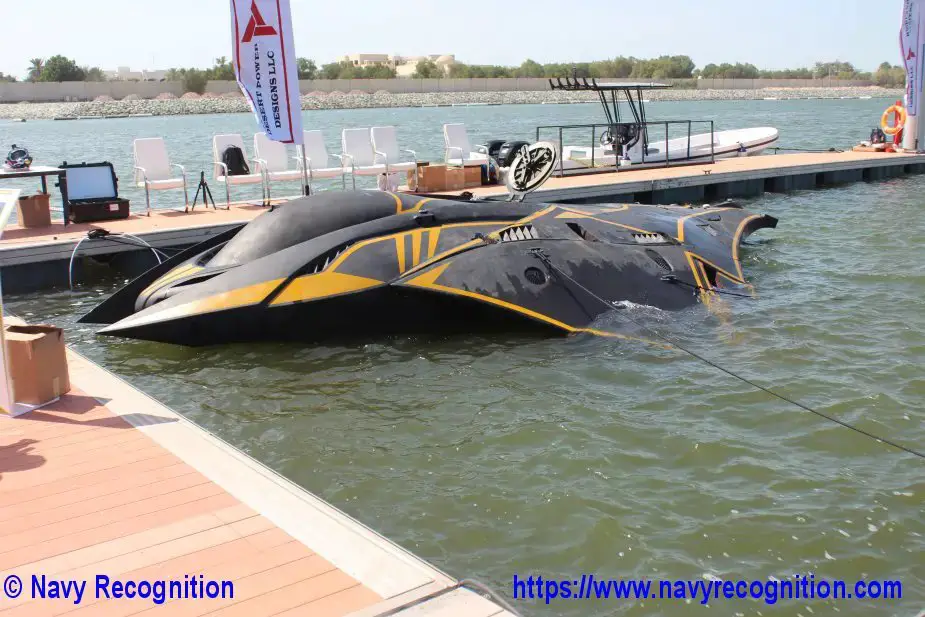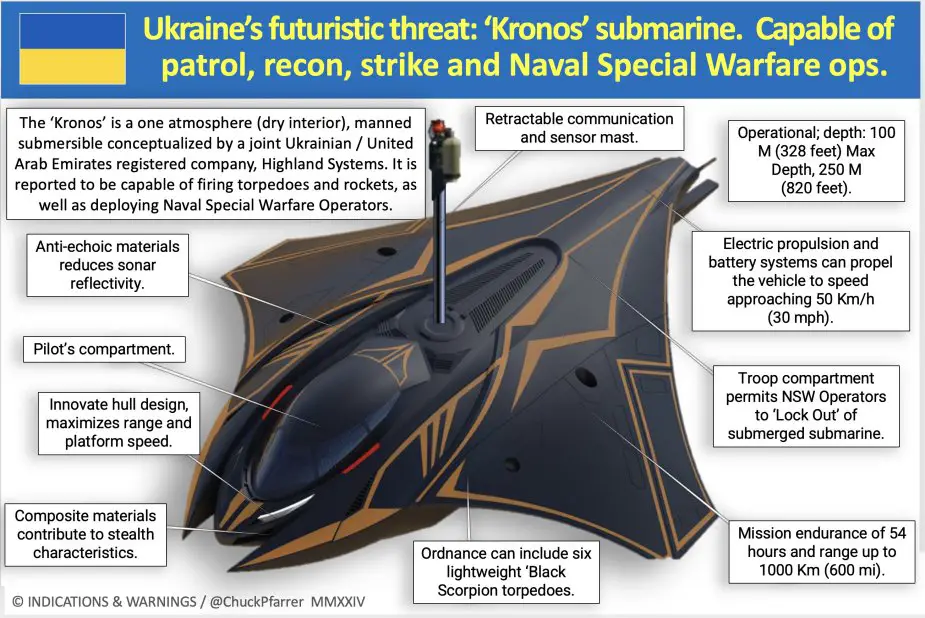According to informaiton published by Kyiv Post on April 16, 2024, the Kronos submarine, built by Emirati company Highland Systems, is currently being tested.
Follow Navy Recognition on Google News at this link
 Kronos submarine at NAVDEX 2023 in Abu Dhabi. (Picture source: Navy Recognition)
Kronos submarine at NAVDEX 2023 in Abu Dhabi. (Picture source: Navy Recognition)
The Kronos submarine, developed by Highland Systems, is an advanced underwater vehicle that merges commercial, rescue, and military functionalities. Highland Systems, originally established by Ukrainian engineers and now operating from the UAE and UK, specializes in innovative technology projects. The submarine is designed with a distinct hydrodynamic shape that allows for enhanced maneuverability underwater, resembling the capabilities of an aircraft due to its wing-like fins equipped with shunting engines.
Kronos features a hybrid propulsion system combining a diesel generator and a powerful electric motor, achieving speeds of up to 80 km/h on the surface and 50 km/h underwater. The submarine can operate at depths of up to 100 meters and withstand a maximum depth of 250 meters. Inside, the submarine is utilitarian with space for up to 10 passengers plus a pilot, indicating a focus on operational rather than luxury or tourist uses.
The submarine's design includes capabilities for remote operation and can transport significant payloads, which adds to its versatility for different types of missions. It also incorporates stealth technology with a hull made from a special composite material, making it difficult to detect via sonar, which is advantageous for stealth military operations. The Kronos can also be equipped with torpedoes, enhancing its defense capabilities.
Naval Warfare
In the context of naval warfare, the Kronos submarine brings forward several potential benefits as well as disadvantages. The design of the submarine, which includes wings or fins with ailerons, enhances its maneuverability underwater, allowing it to perform agile movements similar to those of an aircraft.
This is particularly useful in tactical situations where evasive maneuvers are crucial. Additionally, its hull is made from a special composite material designed to reduce detection by sonar, providing significant stealth capabilities that are advantageous in modern warfare where avoiding detection can be the difference between success and failure.
However, the advanced technology and unique design features of the Kronos also introduce several challenges. The complexity of the systems may lead to higher maintenance demands and the need for specially trained operators, which can increase operational costs and logistical burdens.
Despite its advanced design, the submarine's endurance and operational range are limited to 36 hours underwater, which may not suffice for extended missions or those requiring long-distance travel. The high cost of development and construction could also limit the accessibility of such advanced equipment to only well-funded organizations or nations.
Another notable disadvantage is that, as a new technology, the submarine's performance in actual combat situations remains untested. This lack of proven effectiveness in real-world conditions may affect its reliability and acceptance among potential military users. The gap between theoretical capabilities and operational performance can sometimes lead to reservations about deploying such technologies in critical scenarios.
 Artist rendering of the Kronos submarine. (Picture source: Chuck Pfarrer)
Artist rendering of the Kronos submarine. (Picture source: Chuck Pfarrer)



